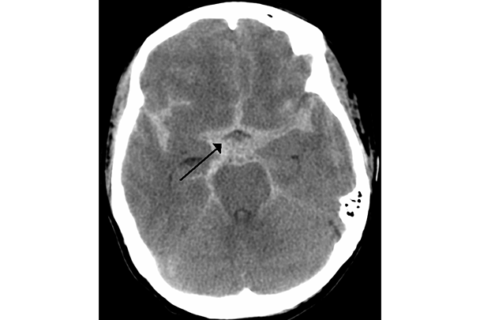
Chronic dizziness and nausea post subarachnoid hemorrhage (SAH)
Published on: February 6, 2013
This week at AIB a 52 year old female, post subarachnoid hemorrhage (SAH), was referred with chronic debilitating dizziness, nausea and emesis . Read the following case history, findings, impressions, plan and current research and the successful outcome.
History: This week at AIB a 52 year old female was referred with chronic dizziness and nausea 14 months post surgical repair for a subarachnoid hemorrhage. Overall she has made a relatively good recovery but is troubled by a chronic dizziness and nausea often resulting in emesis with no precedent event. She has become dependent on transdermal scopolamine patches ( prescribed by her PCP) which provides some but not total relief. She was off the patch for several days prior to her examination. Movement, motion, head and/or body position do not exacerbate her symptoms. Her medical and neurological status was reported to be stable. The purpose of her visit was to establish an indication of active or acute vestibular origin to her complaints.
Findings: Testing included Comprehensive Audiometry, Rotary Chair, VNG, VEMP and Gans SOP. Sole abnormalities noted were the presence of a persistent low-intensity (6 deg/sec) geotropic positional nystagmus (w/o vertigo). Abnormal ocular motor performance with binocular recordings for the left eye in left visual field as would be expected from the optometric history.
Impressions: Symptoms likely unrelated to a peripheral labyrinthine origin and consistent with a central vestibular pathway involvement consistent with well-documented neurological history.
Plan: The patient had originally, post discharge been prescribed Clonzapam by an attending neurologist for the symptoms, but only took it for a few days and discontinued. She was advised to reconsider and follow up with her neurologists’ order. Upon resumption of the prescription within 48 hours the patient reported almost complete amelioration of her symptoms of dizziness and nausea.
Pearl: Clinicians should be aware of central mediated symptoms of dizziness and nausea unrelated to otologic origins. Subarachnoid hemorrhage only account for approximately 5% of strokes.
Recent Research: Korja M. et al., Cause-specific mortality of 1-year survivors of subarachnoid hemorrhage, 2013, Neurology 80:481-486